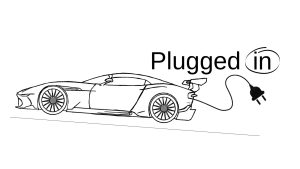Author: Joe Giacomin | (248) 453-0092 | jgiacomin@asgteam.com
Hiring? Beware: Box Checkers & Ticket Punchers
Hiring authorities used to have it a bit easier when seeking specific talent for their organization. They began by establishing job specifications and requirements and essentially matched those with the education, experience, product knowledge, etc. of various candidates. The more closely a person was aligned with each desired qualification, his/her chances of being selected would increase. Pretty logical, yes? That was then.
Typically, a graduate degree (once considered exotic) would ensure stronger consideration and place a candidate ahead of the pack. Many large corporations (including automotive) continue to use an advanced degree as a key component when evaluating potential for promotion and salary increases. This worked well, especially in days gone by when just General Motors alone maintained over 50% of the total automotive market. These companies had to do “something” to differentiate employee qualifications…didn’t they?
This leads us to resume building. I recall hearing a middle manager exclaim: “I plan to spend a little time in this department…enough to get my ticket punched.” He wasn’t all that outstanding, but he moved up the corporate ladder. We are in a time and place in our society where considerable “Box Checking” and “Ticket Punching” are occurring in ever-increasing numbers. Huge claims, big titles, and lofty credentials (often from prestigious institutions) are commonplace on many resumes. Corporate hiring authorities need to be on the alert because scattered throughout the volumes of potential candidates are some highly effective people.

task list is ticked off in detail
The objective of any hiring process? How do we weed through a resume and evaluate the person? We must be careful not to stereotype, i.e. Mary attended ________University so she must be________. Instead, we should view credentials as a basis for consideration, NOT the reason to hire.
I speak with top hiring authorities every working day and they often refer to drive, attitude, motive, enthusiasm, and credibility among the factors they rank as most important.
A good percentage of the time, company executives tend to do an amazing job identifying and acquiring the best talent, at all levels…from the shop floor to the executive suite. I’m in awe of the staffing wins they accomplish and the challenges they overcome along the way. Hiring is a difficult task and one can argue, the most important of all.
“But Beware! Some Individuals certainly look the part, act the part and stack up very well on paper.”
Final note: For quite some time, I’ve been following one key executive rather closely. He has flawless credentials, an extensive track record with a major auto supplier, the image, the communication skills… along with multiple boxes and tickets (foreign and domestic) checked and punched. I think he is a strong contender for the C-Suite when his current CEO retires. He has navigated the process very well…checked a lot of boxes.
But beware! Some individuals seeking that next major opportunity certainly look the part, act the part, and stack up very well on paper. If you’re deciding whether to hire outside the company or promote from within, be sure to consider their “non-resume” qualities. Take a very close look.
Automotive / OEM Sales Salary Analysis
In 2023, the average base salary (assured earnings paid to Metro-Detroit area Automotive OEM supplier sales professionals) was: $127,200.00*
 This represents a modest increase of $540.00 in comparison to the 2022 figure of $126,660.00.
This represents a modest increase of $540.00 in comparison to the 2022 figure of $126,660.00.
The analysis is comprised of OEM sales professionals (does not include management or entry-level candidates) with at least five years of experience
calling directly on automotive manufacturers and/or Tier One and Two suppliers.
** Compensation such as commission, bonus, benefits, expenses, and company vehicles/allowances have been excluded. The earnings average is for guaranteed first-year salary only.
Vehicle Offerings: A Look Ahead
The Yearbook Edition of Automotive News recently published a favorite feature article, the “What’s Ahead” presentation of upcoming models from the automotive manufacturers. It includes product plans scheduled by foreign and domestic companies…. legacy nameplates and many of the more recent start-ups.
 Each company lists various models from the current year on through 2027…designating each vehicle as either “new”, “freshen”, “redesign” or “replacement”. Some vehicles maintain traditional internal (ICE) combustion engines, others were listed as Hybrid models, with the remainder being fully (EV) Electric. Scattered throughout, in all categories were vehicle listings with a (?) next to it.
Each company lists various models from the current year on through 2027…designating each vehicle as either “new”, “freshen”, “redesign” or “replacement”. Some vehicles maintain traditional internal (ICE) combustion engines, others were listed as Hybrid models, with the remainder being fully (EV) Electric. Scattered throughout, in all categories were vehicle listings with a (?) next to it.
In the past, lists forecasting various vehicles both new and modified, while exciting, displayed a certain level of predictability… primarily because they all shared a common denominator, gasoline.
“Essentially, a lot of “hedging” is taking place…”
Apart from start-up, fully electric manufacturers, the remaining companies are continuing to build, freshen and (?) replace internal combustion vehicles, develop electric power trains and just for good measure delve into those in between (hybrid) offerings and maybe some yet to be tested, alternative pathways. Essentially, a lot of “hedging” is taking place… and this uncertainty is causing considerable hand wringing, and at a cost that begins to add up to real money.
And if you’re a supplier, especially in a propulsion related product area, your planning activity will have to somehow parallel these multiple directions.
The challenges and risks of advance product planning … determining what the consumer will want, need –and when, has always been both art and science. However, I believe in days gone-by it was at least a bit more fun.




